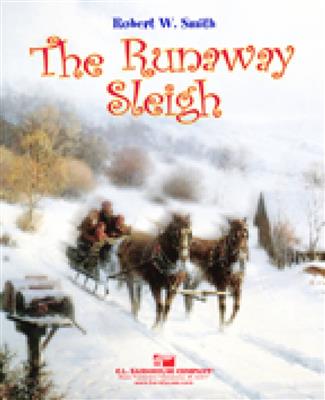Results
-
 £74.99
£74.99Emblem of Unity
This highly regarded work has long been a favorite from the repertoire of outstanding concert marches found in band libraries throughout the world. This new edited version with full score will allow directors the opportunity to once again experience the exhilarating sounds of one of the all-time great marches. EXCELLENT!
Estimated dispatch 7-14 working days
-
 £71.50
£71.50Allied Honor - Karl L. King
Musicians the world over love to perform marches from the pen of this march genius. James Swearingen's edited version allows bands to once again experience this unique easier grade Karl King composition.
Estimated dispatch 7-14 working days
-
 £71.50
£71.50Winds of Morocco - Robert Sheldon
Exciting and colorful composition featuring short solos for several woodwind instruments and provides a marvelous change of pace for any concert or contest. Exotic melodic lines and harmonies are combined with the powerful rhythms of Northern Africa to create a memorable musical experience. A wonderful choice for smaller high school bands Grade 3
Estimated dispatch 7-14 working days
-
 £83.50
£83.50Adventures - Shabazz
A bold musical adventure, this exciting work by Ayatey Shabazz is an excellent concert or festival selection. Exploring the range of musical expression and contrast, Adventures features brilliant brass fanfare figures as well as light and flowing lyrical melodies leading to a very energetic conclusion. Challenging, yet technically accessible, the musical journey through Adventures is sure to provide a wonderful experience for performer and audience alike.
Estimated dispatch 7-14 working days
-
 £89.99
£89.99The Symphony of Souls - Robert W. Smith
This stunning composition by Robert W. Smith is actually a full symphony in smaller proportions. The piece was composed to commemorate the Battle of Bad Axe, the historic last Indian-American battle fought east of the Mississippi River. Written in four descriptive movements entitled Foreshadows, Warriors, Carnage, and Elegy, the piece evokes powerful sounds and imagery through contemporary scoring techniques while being technically accessible to most concert bands. Unique percussion effects combined with creative scoring provide an experience that your band and audience will not soon forget.
Estimated dispatch 7-14 working days
-
 £78.99
£78.99St. Lawrence Chronicles - Eastmond
Take a historical journey into the heart of the continent along the powerful St. Lawrence River as the early French explorers did. The immensity and beauty of this historic river is captured in bold brass fanfares. Haunting woodwind themes encapsulate the relentless exploration of the New World, and the lush, melodic slow section presents many opportunities for lyrical playing. Ideal for bands of moderate experience, this programmatic composition is perfect for contest, festival and concert performance.
Estimated dispatch 7-14 working days
-
 £78.99
£78.99Portrait of an Old Country Town - Grice
Rob Grice's Portrait of an Old Country Town is a programmatic work depicting images of an early American community. The beauty of the countryside, the work involved in taming the great outdoors, and a small town festival celebration are all pictorial elements of the piece. Accessible to bands of modest experience, sounds much harder than it is. An exceptionally nice work!
Estimated dispatch 7-14 working days
-
 £83.50
£83.50Solaris - Robert W. Smith
Written for the 2008 Florida All-State Honor Band, Solaris is a musical portrait of the glorious sunshine that permeates the state. Beginning with a peaceful sunrise and the warmth of the early morn, the piece builds to the energy and chaos of a new day with a crescendo to its ultimate radiance! Suitable for concert and festival performance, your band will find Solaris to be a rewarding experience for all.
Estimated dispatch 7-14 working days
-
 £74.99
£74.99The Runaway Sleigh - Robert W. Smith
Off we go enjoying our traditional holiday sleigh ride. However, this time the horse gets a bit skittish and begins to speed up. With each passing phrase, our simple ride turns into the wildest of holiday adventures. In a very fun and entertaining setting, students will learn to watch the conductor while experiencing a wide range of tempi. As an option, you may wish to feature the accessory percussion/sound effect part "front and center" making The Runaway Sleigh a hilarious and hair-raising experience for all!
Estimated dispatch 7-14 working days
-
 £164.50
£164.50Promising Skies - Robert W. Smith
In late August of 2005, the normally festive skies over the city of New Orleans began to change. As Hurricane Katrina approached the city, the skies promised a weather event of unprecedented proportions. Composer Robert W. Smith was commissioned by the United State Marine Forces Reserve Band of New Orleans to create this symphonic tone poem recreating and commemorating the Katrina experience. Beginning with "Blue Sky," the jazz of the historic city provides the musical inspiration. Soon, the "Threatening Sky" arrives giving way to the "Raging Sky." Finally, the "Dawn of a New Sky" brings hope as the city is reborn to share its musical gifts once again."Promising Skies" is large work for concert band at the medium advanced level. Using the American art form of jazz as its base along with unusual percussive effects, the piece is a unique and welcome contribution to the repertoire.
Estimated dispatch 7-14 working days
